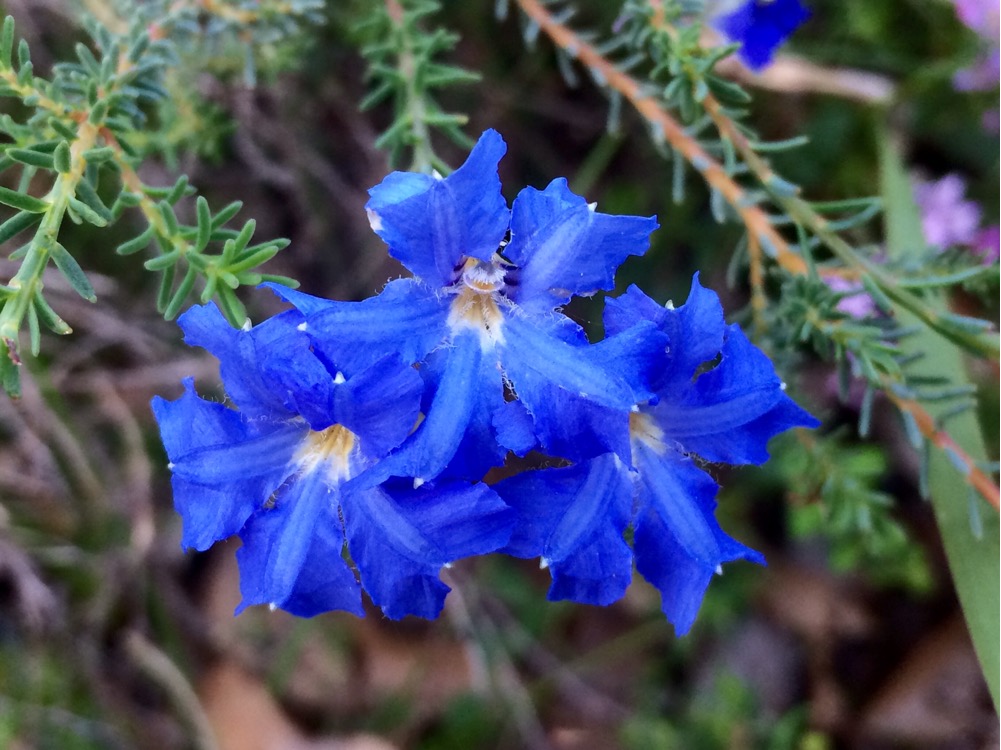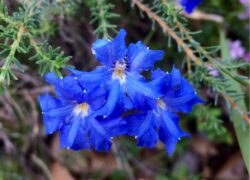Blue Lechenaultia
Blue Lechenaultia is a small plant that produces striking blue flowers.
For information on staying waterwise, seeking a watering exemption while establishing your garden, offers, rebates and more, please visit the Water Corporation website.
Noongar Name: Unknown
Scientific Name: Lechenaultia biloba
Performance: A great plant, but you’ll need a green thumb
Size: Small shrub with a maximum height 50cm
Flower: Blue
Flowering Time: Djilba – Birak (Aug – Dec)
Natural Distribution: Grows locally in the Perth region
- Lechenaultia biloba (CC-BY-NC 4.0) Keir Morse
- Lechenaultia biloba (CC-BY-NC 4.0) Melinda Thompson
- Lechenaultia biloba (CC-BY-SA 4.0) tobyyy
- nc Lechenaultia biloba (CC-BY-NC 4.0) Jordana1971
Growing at a Glance
See Growing Guide for more detail
Position: Adaptable to sunny and light-shade positions
Watering: Will benefit from occasional summer watering.
Feeding: Fertiliser not required.
Pruning: Generally not needed.
Growing Guide
Invited Guests
This provides habitat for Invertebrates
- Habitat and Food for Invertebrates






